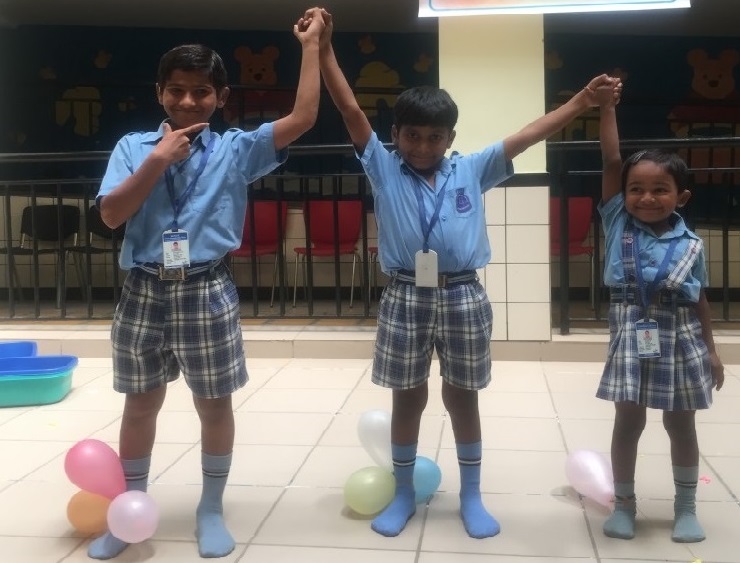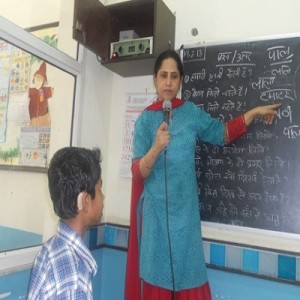Adapting to a Child with Hearing Loss: A Teacher’s Perspective
A teacher’s job is to ensure that his/her students have a hunger to learn overcoming all odds and limitations. Even though the child has a hearing impairment and requires extra care. Being a teacher for special children, I have learnt adapting to different teaching strategies that work in the classroom setting. But before taking any step, I try to analyse the extent of hearing impairment every child suffers from. Proper assessment of the situation allows me to ensure educational accessibility for these special children. Adding flexibility and willingness in the creative abilities, goes an extra mile in finding ways to overcome difficulties. And, not to forget, effective communication is the key.
If a person never had a chance to experience how hearing loss occurs or how hearing is made easier then, he/she may not have an exact idea. For instance, talking in a high-pitched voice makes it difficult to hear or donning a thick beard poses a problem in being able to read lips. Further research into the topic makes it easier for an educator to examine the problems faced by a hearing impaired student inside classrooms. But a teacher can address these issues very well by applying techniques like enunciating, lowering tones and face to face interactions. When I know that I have to deal with a child suffering from a hearing loss, I have to keep an account of his/her problems as well as experiences they are going through.
Hand-Signal Codes Always Work
Listening is exhausting for those who cannot hear properly. There is so much of work on a teacher’s part that includes trying to figure out meanings, interpret the signs and comprehend the language. Small steps make a huge difference. Over the years, I have developed a few hand-signal codes while teaching at Mata Bhagwanti Chadha Niketan (MBCN), a special school for deaf children run by the Ponty Chadha Foundation. These codes helped me in determining whether a child’s supporting devices are working properly. If I ask a simple personal thing like ‘Show me the place where you sit or tell me the reason why you sit there,’ goes a long way in designing the most effective classroom strategy for such children.
Getting students to give their reasons helps me a lot in reflecting upon my actions and contemplate about the reasons behind them. There have been moments in life where I found all my efforts gone kaput just because of lack of communication. Therefore, it all boils down to effective communication at last. To justify these words, I applied few of simple methods in my special class that made a difference.
An Adapted Class
While speaking, I make sure that my face is visible to the child suffering from a hearing loss. Another way is making friends. A student, who can hear well, can work with those who are hard-of-hearing. Peer support is of great relief to an occupied teacher. Furthermore, providing context and background behind everything and repeating lessons increases the power of memorizing. Give a quick recap of what has already taken place and announce what is coming up next in advance. I also take help from the assistive technologies that help me derive success by eliminating the background noise for a child with hearing impairment and increase his/her access to sound. In most common usage is the FM technology that directly transmits sound to the listening device of the hearing impaired child. Though, the technique is effective only if the device is in place and is being used properly. It is also to be made sure that the teacher is speaking through a microphone.
If the transmitter cannot be passed around the classroom, a teacher can make the situation conducive by repeating back whatever is being spoken. The mike will pick up the sound. It is possible to maximize the efficiency of this technology by conveying its importance to all the parents, students and faculty members comprising the substitute teachers as well as the administrative staff. Also, encourage a student to speak for himself. Create an environment where a child can raise his/ her hand and say ‘I am not able to hear you’ as an idea can change lives of those whom you teach.
Communication is the Key
Now, take the communication considerations into account. As my special student relies on lip-reading, I always signal his/her attention before speaking. I assign him/her a desk in front where I stand generally. While giving lectures, I also slow down my lip movements so that students are able to grasp what is being taught. I communicate to them through gestures, facial expressions and body language. Idioms could be taught explicitly and jokes could be explained. These children often lag behind in developing social graces. Therefore, specific social skills like carrying on a conversation or joining them is also taught to them. These techniques of teaching things differ for every student.
Getting Visual
Adopting visual strategies and making curriculum accommodations for them is also a welcome-step. The class instructions, homework assignments and procedural changes are written on board. I use posters, flash cards, charts, graphic organizers, pictures, captioned videos and artifacts to illustrate concepts. In addition, visual aids like semantic maps and word webs also help in establishing connecting links between information. The available human resources, such as teacher aides, peer-tutoring, interpreters, note-takers and therapy services can also be utilized. Resources like sign-based websites or pictorial programmes can be used on instructions or borrowed from an advisory visiting teacher or a special education facility located nearby.
These efforts are surely to bear fruit with a bit of prior planning. An Individual Education Plan (IEP) was a concept devised to meet the needs of every differently-abled child at special schools for deaf in India. To know about the impact, periodical assessments are equally necessary. They are fruitful in identifying barriers, altering a process and making special arrangements. At MBCN, I am not just a teacher but a WaveOfChange which takes a multifaceted approach to deliver socially driven outcomes through an act of philanthropy.
– See more >> Click Here












